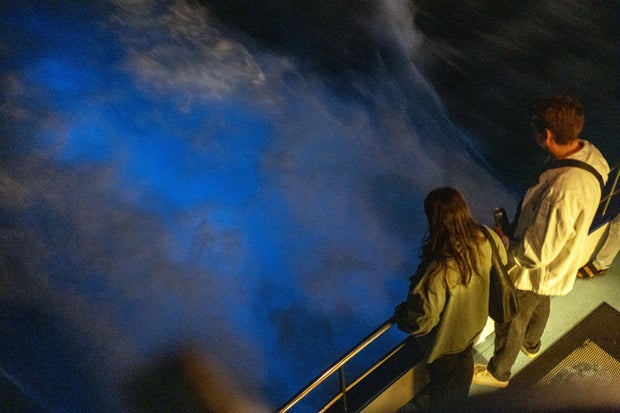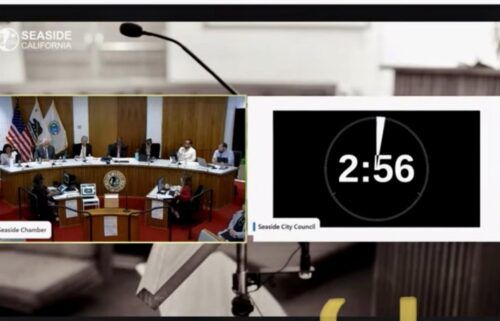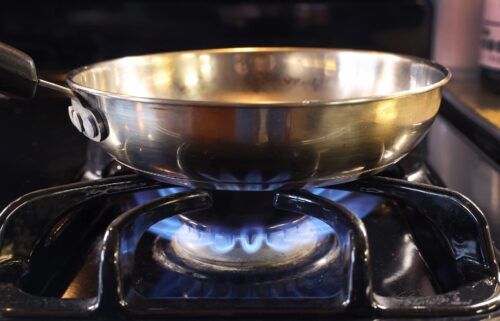California dolphins were swimming in “magical” waves with a “beautiful blue glow.” Here’s what caused it.
BY LI COHEN
Southern California's coast has taken on an unusual appearance in recent days. Every night, the water gets a "beautiful blue glow."

Videos from the coastline show dolphins jumping through glowing waves with boats seemingly emitting the glow as they glide through the water, and people walking through sand with every footstep igniting a neon blue spark.
"Just very awe-inspiring, wondrous. It's magical," Jessica Roame, a whale watching educator at Davey's Locker, a tour agency, told the Associated Press. "People are just — can't believe that this is something that's actually a natural phenomenon."
So what's causing it? Plankton blooms.

Roame said that there has recently been a "massive" bloom of photosynthetic plankton in southern California. And according to the Scripps Institution of Oceanography, that bloom is being fueled by red tide, which southern California experienced a historic event of in 2020.
Red tide is a harmful bloom of algae that is packed with toxins linked to fish kills and has the power to dissolve oxygen levels. It's also known to irritate humans' respiratory systems, eyes and noses. The particular plankton within these California blooms are dinoflagellates, which Scripps says will swim toward the ocean surface during the day so that they can photosynthesize, and then go deeper into the sea at night. But not all of the plankton will leave the ocean surface once the sun goes down, leading to the bioluminescent waters.
"Dinoflagellates use bioluminescence as a predator avoidance behavior," Scripps said during the 2020 event. "When the phytoplankton are agitated by waves or other movement in the water, they emit a dazzling neon blue glow at night."
During a bloom, these microscopic organisms gather in the trillions and turn the water reddish-brown, hence the name "red tide." Each cell contains a little bit of "sunscreen" that gives it color. Video footage by Scripps PhD student Erik Saberski. #RedTide #LaJolla pic.twitter.com/9mQzmrqRoX
— Scripps Institution of Oceanography (@Scripps_Ocean) April 29, 2020
"When the waves are crashing, that's agitating the plankton," Roame adds. "When our boats are moving through it...when the dolphin and fish are swimming through it, that's creating an agitation, so it will stir the plankton up and create that beautiful blue glow."
Roame said that something like this used to only happen "once every five to 10 years."
But now?
"It's happening a couple times a year in spurts," she said. "So really, why this is happening so often may be due to climate change. ... that's definitely one theory."
As average global air temperatures increase, so will the temperatures of the world's oceans. Higher global temperatures are also linked to more frequent and intense storms, leading to more runoff getting into waterways. And those higher temperatures and additional nutrients "can result in conditions favorable for algal blooms," the Environmental Protection Agency says.
"With a changing climate, harmful algal blooms can occur more often, in more fresh or marine waterbodies, and can be more intense," the agency said. "... Even if algal blooms are not toxic, they can hurt aquatic life by blocking out sunlight and clogging fish gills. Harmful algal blooms can also create 'dead zones,' areas in water with little or no oxygen where aquatic life cannot survive."



